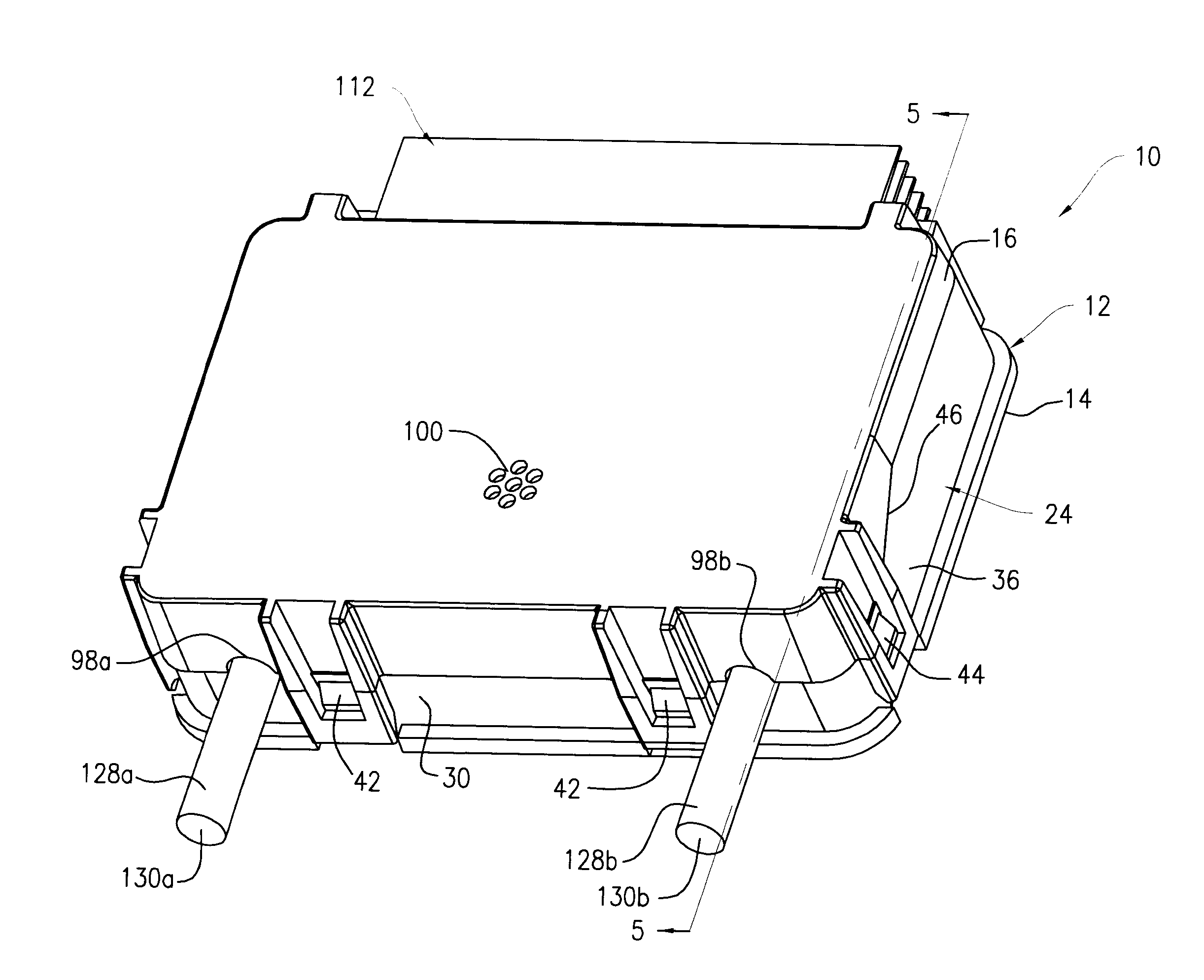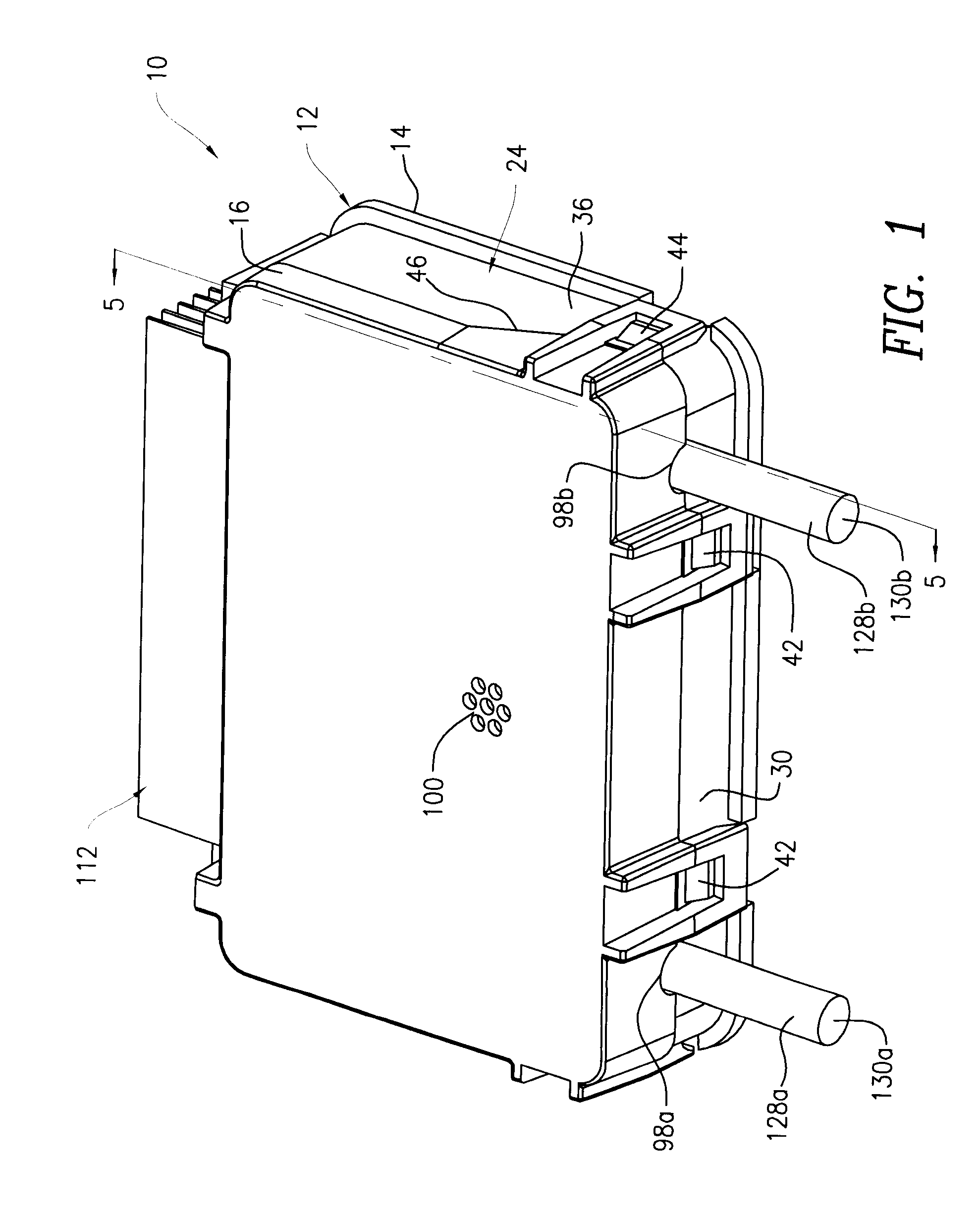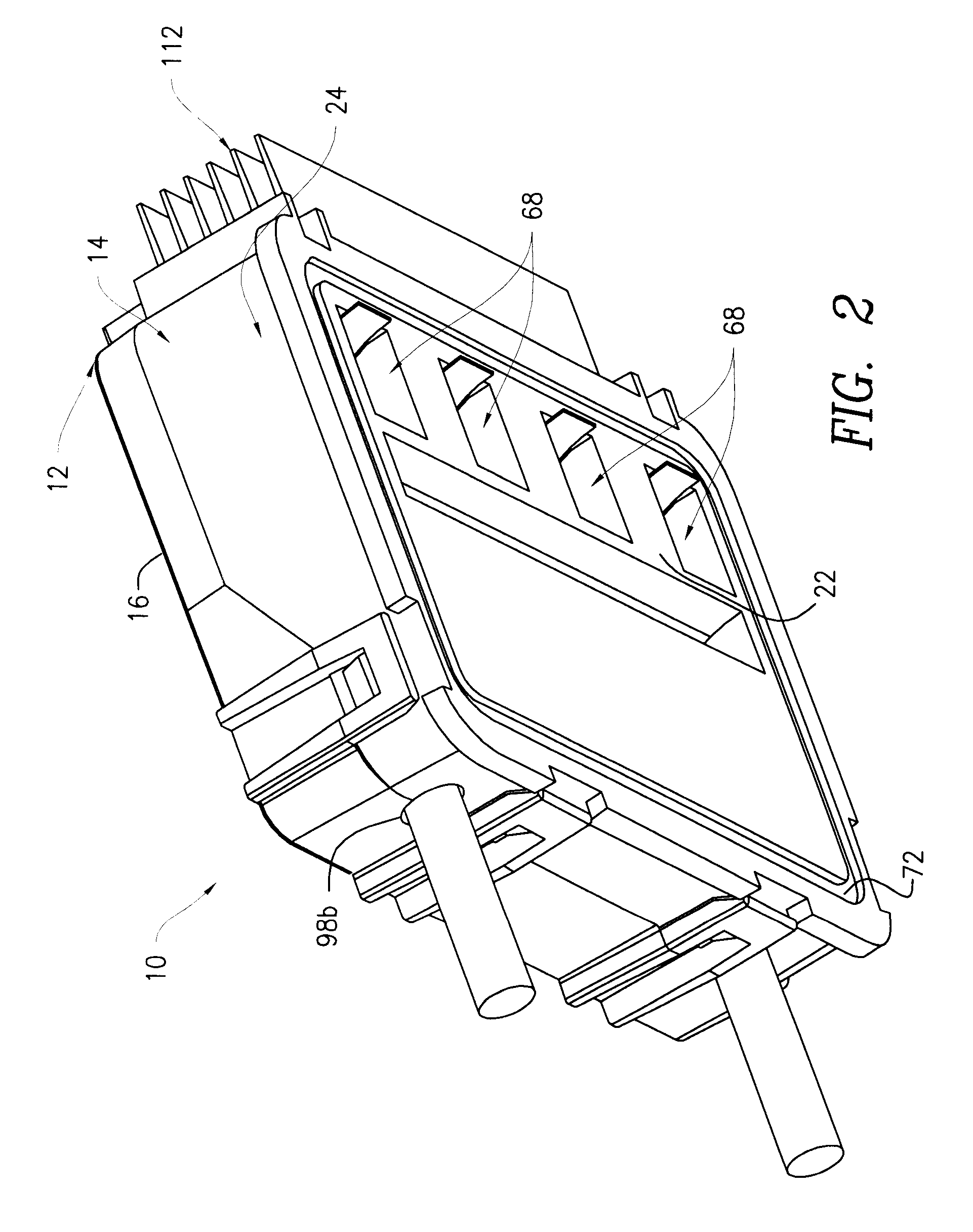Junction box for photovoltaic systems
a photovoltaic system and junction box technology, applied in the direction of pv power plants, electrical apparatus casings/cabinets/drawers, coupling device connections, etc., can solve the problems of complex construction, lack of reliable electrical connections, laborious installation, etc., and achieve reliable physical and electrical connections
- Summary
- Abstract
- Description
- Claims
- Application Information
AI Technical Summary
Benefits of technology
Problems solved by technology
Method used
Image
Examples
Embodiment Construction
[0016]Referring to FIGS. 1 and 2, an electrical junction box 10 includes a rectangular-shaped housing 12 having a base 14 and a cover 16 attached removably to the base 14. The base 14 and the cover 16 are separate and distinct components, but they may be of unitary construction. The housing 12 is manufactured from a thermoplastic polymer, such as polycarbonate. However, the housing 12 may be manufactured from any other suitable materials known in the art, especially materials having electrical insulating properties. Although the housing 12 is rectangular in shape, it may consist of other shapes and sizes (e.g., square, oblong, circular, elliptical, etc.) in order to accommodate a variety of applications.
[0017]Referring to FIGS. 2 and 3, the base 14 includes a floor 18 having an interior surface 20 and an exterior surface 22 opposite thereof, and a wall 24 that extends outwardly from the floor 18 and around the perimeter thereof. The wall 24 has an interior surface 26 and exterior su...
PUM
 Login to View More
Login to View More Abstract
Description
Claims
Application Information
 Login to View More
Login to View More - R&D
- Intellectual Property
- Life Sciences
- Materials
- Tech Scout
- Unparalleled Data Quality
- Higher Quality Content
- 60% Fewer Hallucinations
Browse by: Latest US Patents, China's latest patents, Technical Efficacy Thesaurus, Application Domain, Technology Topic, Popular Technical Reports.
© 2025 PatSnap. All rights reserved.Legal|Privacy policy|Modern Slavery Act Transparency Statement|Sitemap|About US| Contact US: help@patsnap.com



